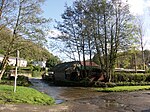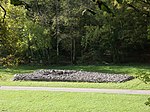Pennard (electoral ward)

Pennard is the name of an electoral ward in the City and County of Swansea, Wales, United Kingdom. It is coterminous with the community of Pennard.The electoral ward consists of some or all of the following places: Bishopston, Fairwood Common, Kittle, Parkmill, Pennard and Southgate in the parliamentary constituency of Gower. Part of Three Cliffs Bay falls within the ward. Pennard is bounded by the wards of Gower to the west; Fairwood to the north and Bishopston to the east. The Bristol Channel borders Pennard to the south. Pennard also elects a community council. For electoral purposes to Pennard Community Council, Pennard is divided into the polling wards of Southgate and Kittle. Pennard ward returns one councillor to the City and County of Swansea council. Since May 2012 it has been represented by Lynda James (Independent). In the 2012 local council elections, the voter turnout was 52.31%. The results were: Councillor James successfully defended her seat at the May 2017 elections.
Excerpt from the Wikipedia article Pennard (electoral ward) (License: CC BY-SA 3.0, Authors, Images).Pennard (electoral ward)
Pobbles Close,
Geographical coordinates (GPS) Address Nearby Places Show on map
Geographical coordinates (GPS)
| Latitude | Longitude |
|---|---|
| N 51.57217 ° | E -4.0937 ° |
Address
Pobbles Close
Pobbles Close
SA3 2BT , Pennard
Wales, United Kingdom
Open on Google Maps








